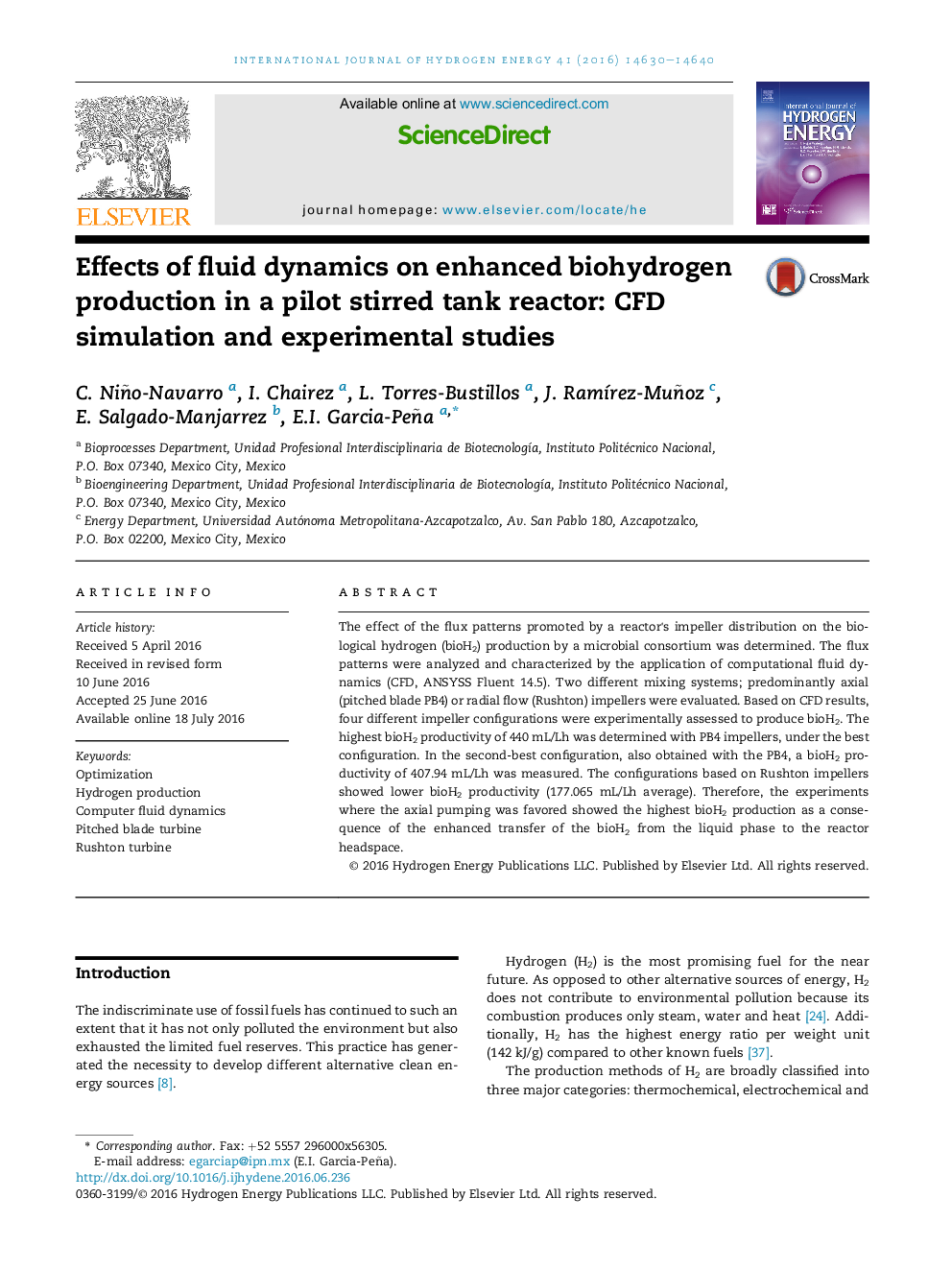| Article ID | Journal | Published Year | Pages | File Type |
|---|---|---|---|---|
| 1269340 | International Journal of Hydrogen Energy | 2016 | 11 Pages |
•Flux patterns were analyzed by CFD in a bio-hydrogen (bioH2) production system.•Experimental observations were successfully compared to CFD results.•PB4 impellers pump fluid efficiently, increasing the bioH2 production.•The mechanism relies on mass transfer phenomena of the bioH2 from the liquid phase.•The hydrodynamic optimization of the reactor enhances the bioH2 production.
The effect of the flux patterns promoted by a reactor's impeller distribution on the biological hydrogen (bioH2) production by a microbial consortium was determined. The flux patterns were analyzed and characterized by the application of computational fluid dynamics (CFD, ANSYSS Fluent 14.5). Two different mixing systems; predominantly axial (pitched blade PB4) or radial flow (Rushton) impellers were evaluated. Based on CFD results, four different impeller configurations were experimentally assessed to produce bioH2. The highest bioH2 productivity of 440 mL/Lh was determined with PB4 impellers, under the best configuration. In the second-best configuration, also obtained with the PB4, a bioH2 productivity of 407.94 mL/Lh was measured. The configurations based on Rushton impellers showed lower bioH2 productivity (177.065 mL/Lh average). Therefore, the experiments where the axial pumping was favored showed the highest bioH2 production as a consequence of the enhanced transfer of the bioH2 from the liquid phase to the reactor headspace.
Graphical abstractFigure optionsDownload full-size imageDownload as PowerPoint slide
